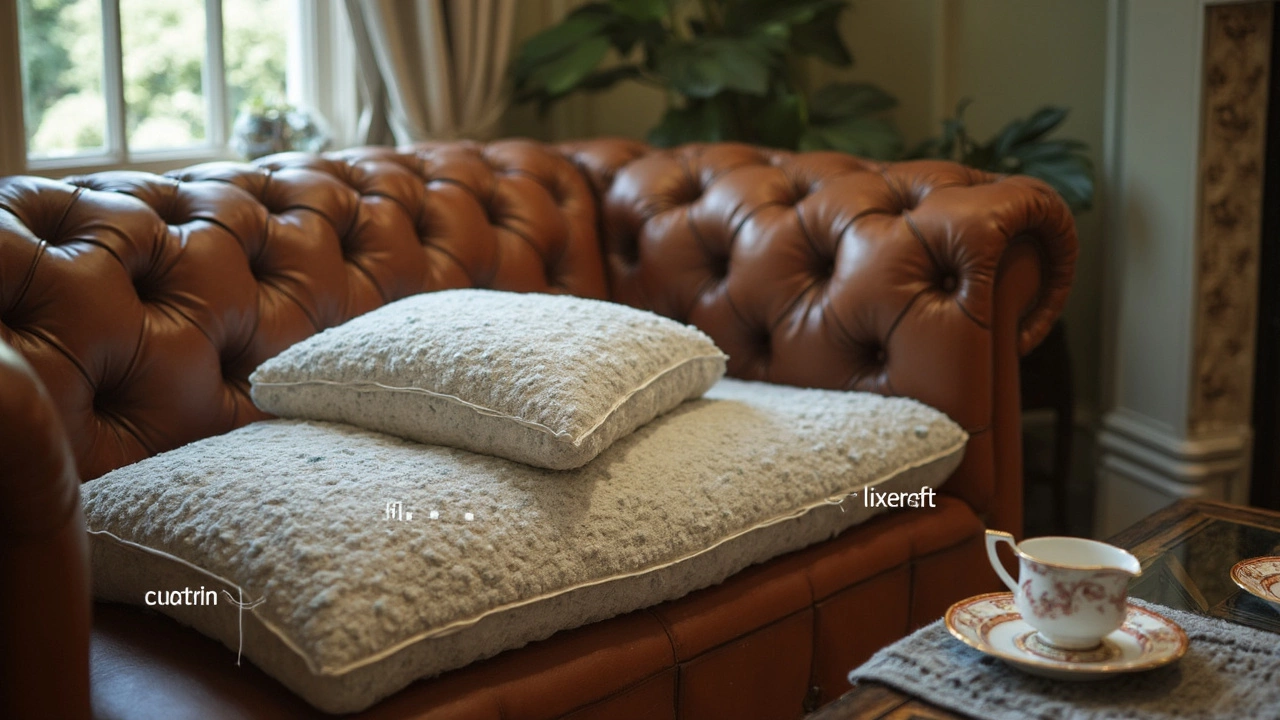Seat Cushions: Choose, Arrange & Care for Perfect Comfort
If you’ve ever wondered why a simple cushion can change a room’s vibe, you’re not alone. A well‑chosen seat cushion adds comfort, pops of colour, and a touch of personality without a full makeover. Below you’ll find straight‑forward advice to get the most out of your cushions, whether they sit on a sofa, a bed, or a lounge chair.
Sizing and Quantity
The first rule is simple: match the cushion size to the seating depth. For a standard three‑seater sofa, start with two large squares (about 20‑22 inches) and add one or two smaller squares (12‑14 inches) for contrast. A two‑seater works well with one large rectangle and a couple of mini squares. If you’re dressing a bed, think of two large pillows flanking each side and a pair of throw‑size cushions at the foot for a balanced look.
Don’t overstuff the space. A cluttered cushion arrangement feels heavy and defeats the purpose of adding comfort. Aim for a 60‑40 rule: 60 % of the seat width covered by larger cushions and the remaining 40 % filled with smaller accents.
Styling and Maintenance
Mixing textures is key. Pair a smooth linen square with a chunky knit rectangle for a cosy contrast. When it comes to colour, start with a neutral base (grey, beige, or muted navy) and add one bold accent—think deep teal, burnt orange, or a patterned print. This keeps the look cohesive while giving you a focal point.
Material matters for both look and durability. Cotton and linen breathe well and are easy to wash, perfect for families with kids or pets. Velvet adds luxury but needs dry‑cleaning or gentle spot‑cleaning. For outdoor seating, choose polyester or solution‑dye fabrics that resist fading and water.Placement tricks can make a small sofa feel larger. Align the longest cushion along the backrest, then fan smaller squares outwards. This draws the eye upward and creates visual height. On a bed, stagger the cushions so they aren’t perfectly aligned—this adds depth and a relaxed feel.
Cleaning doesn’t have to be a chore. Most indoor cushions have removable covers; toss them in the washing machine on a gentle cycle with cold water. Air‑dry to keep the fill from clumping. For non‑removable covers, a quick spot‑clean with a mild detergent works fine. Rotate cushions every few weeks to prevent uneven wear.
When you’re not using them, store cushions in a breathable fabric bag rather than a plastic box. This avoids mildew and keeps the fibres fresh. If space is tight, stack them flat and place a sheet of kraft paper between each layer to prevent crushing.
Finally, have fun with it. Seat cushions are low‑cost, high‑impact pieces you can swap out seasonally. Try a fresh set of bright cushions in summer and switch to deeper, warmer tones when the weather turns crisp. The right cushions instantly lift a room’s comfort level and style—no major renovation required.
Best Density Foam for Comfortable Seat Cushions
- Gavin Whitaker
- |
- |
- 0
Choosing the right density foam for seat cushions is crucial for comfort and durability. Foam density impacts how your couch feels, with different densities suiting different preferences and uses. We'll break down the basics of density, look at the pros and cons of different types, and offer tips for making the perfect choice. Whether you need firm support or a plush feel, understanding foam density can improve your lounging experience.
View more